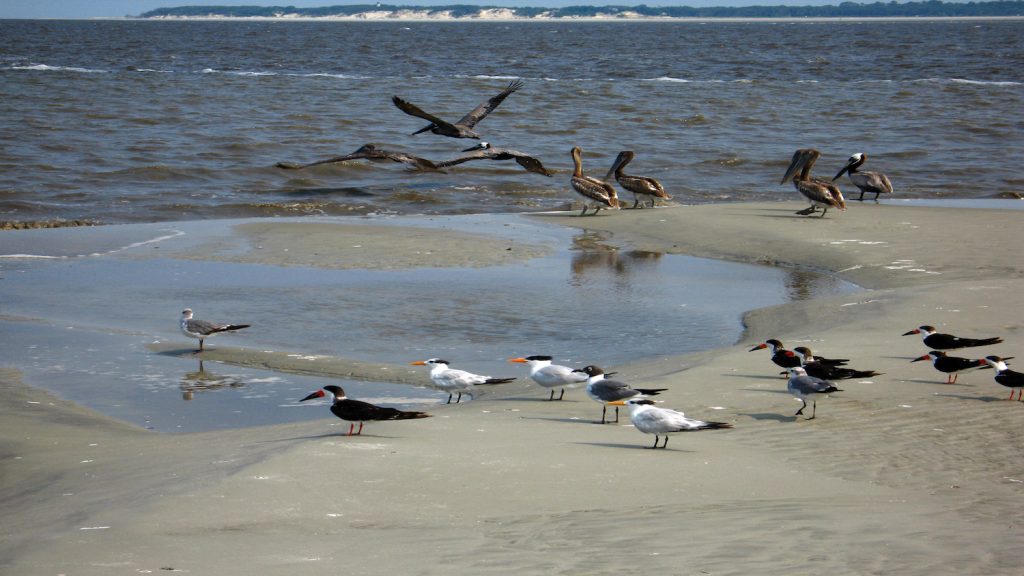Identifying Conservation Objectives for the Gulf Coast Habitats of the Black Skimmer and Gull-billed Tern

Principal Investigator: James Cronin, USGS Wetland and Aquatic Research Center
Project Completion: September 2019. This project is now completed.
Implements Science Plan Theme: 2, 4, and 5
Overview
Many shorebirds and nearshore waterbirds are of conservation concern across the Gulf of Mexico due to stressors such as human disturbance, predation, and habitat loss and degradation. Conservation and protection of these birds is important for the functioning of healthy ecosystems and for maintaining biodiversity in North America. Consequently, resource managers along the Gulf need decision-aiding tools that can help to answer important conservation questions for different species (e.g., how much area should be targeted by management actions to meet a species’ needs). To address this need, project researchers developed statistical models that could help identify habitat conservation objectives and actions for bird species taking into account different Gulf coast conservation scenarios that might occur in response to sea-level rise. The project focused specifically on the Black Skimmer (Rynchops niger) and Gull-billed Tern (Gelochelidon nilotica), two species designated as U.S. Fish and Wildlife Service Species of Conservation Concern and Gulf Coast Joint Venture Priority Species. These two birds are also representative of a variety of other beach and barrier-island nesting birds whose nesting habitats are threatened by sea-level rise (e.g., Least Tern, Snowy and Wilson’s Plover). The statistical models linked each bird’s abundance to habitat characteristics that could be influenced by different management actions. This information could be used to identify conservation objectives under different conservation scenarios.
View a SE CASC Science Seminar Series presentation summarizing this project:
https://youtu.be/yiN1dxbchvs
More Information
- The South Central Climate Adaptation Science Center is jointly funding this project.
- This project will complete one objective of a large regional project, Establishing Explicit Biological Objectives to Guide Strategic Habitat Conservation for the Gulf Coast (National Landscape Conservation Cooperative Project), coordinated by the US Fish and Wildlife Service Gulf Restoration Program and involving USGS, LCC, USFWS, and NGO partners across the Gulf Coast.
